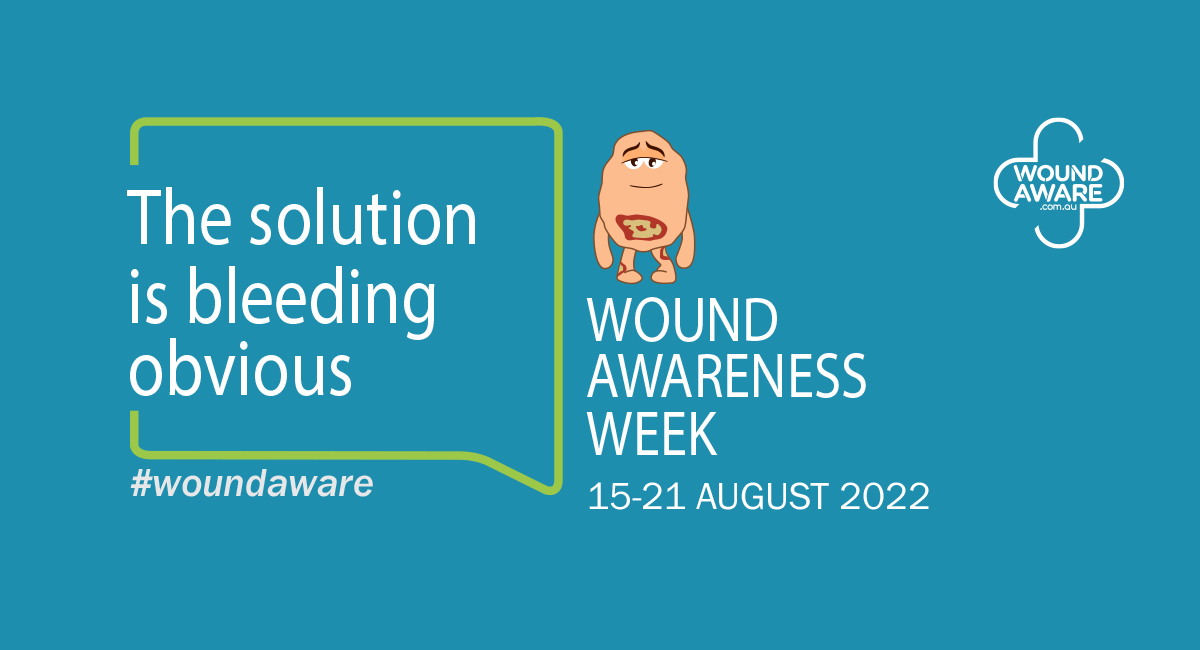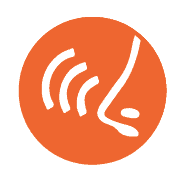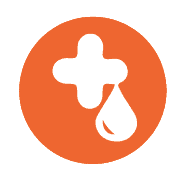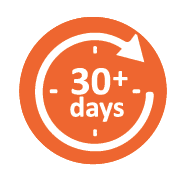Wound Awareness Week 2022

As Lymphoedema practitioners we often have clients present with a chronic wound. Chronic wounds are those that have not progressed through normal healing stages within 30 days. They may heal very slowly, partially or reoccur. The warning signs of chronic wounds include pain and heat, odour, excess fluid and taking longer than a month to heal. Leg ulcers and pressure sores are common types of chronic wounds.
Maree O’Connor asked Hayley Ryan, Wounds Australia Chair, about this hidden epidemic.
Maree: What do you estimate is the number of individuals suffering a wound in our community?
Hayley: We know that more than 420,000 Australians suffer a chronic wound every year – almost as many who suffer with dementia, yet dementia is much better funded and publicised. This results in almost 200,000 unnecessary emergency department visits annually, by people whose wounds could have been prevented or treated by wound care clinicians in the community, at a time when our hospitals are already overstretched. Chronic wounds cost our health and aged care systems a massive $3 billion. The worst of it is, these are all avoidable problems.
Maree: The campaign message is ‘the solution is bleeding obvious’. What is the solution?
Hayley: The solution isn’t easy but it is achievable: the implementation of a national wound care framework that includes MBS itemisation for wound care treatment and products, specialist wound care training for healthcare professionals, increased funding and involvement of the peak body – Wounds Australia – at the highest levels. Our 11 Point Plan, which we presented to the Federal Government in 2021, provides a helpful roadmap.
Maree: What do you want to achieve with Wounds Awareness Week this year?
Hayley: Chronic wounds really is Australia’s hidden epidemic, so the primary aim of Wound Awareness Week is always to shine a spotlight on chronic wounds. This year, we hope to take the conversation even further by introducing the Big Oozie Bake Off – an opportunity to come together to explore the topic (while enjoying an oozy treat!) that has been missing in previous years. We’re asking people to share their photos on social media with the #woundaware hashtag to extend the reach even further. We have wound care patients and their families, healthcare professionals, universities, and MPs and Senators organising and attending these morning teas so it’s really about involving everybody with a stake in chronic wound care – from sufferers to policymakers – in the conversation, and making sure everyone’s voice is heard.
Wound Awareness Week is your opportunity to support the 420,000+ Australians suffering a chronic wound.
So please get involved! Every action counts. You’ll find downloadable resources for education, social media sharing and morning tea organisation on our website: www.woundaware.com.au
For Health professionals
Each day during Wounds Awareness week there are CPD opportunities. View their calendar. More great resources are being added to this calendar page, so check back over the next week
https://www.woundaware.com.au/calendar/

Wounds are estimated to cost health system $3billion AUD every year

Nearly half a million Australians suffer from chronic wounds every day

Chronic wounds can happen to anyone, but age and some chronic diseases increase your risk
Meet Wounds Australia ambassador
Former Australian of the Year, Professor Fiona Wood, shares the facts about chronic wounds. Professor Wood said the trauma of chronic wounds remain largely unknown despite causing massive financial and health burdens. Chronic wounds cost Australia’s health and aged care budgets more than $3 billion annually. The average patient faces $4,000 out of pocket costs. That’s around $340 every month.
“Chronic wounds cause pain, infections, amputations and even death. However, many can be healed with the right help from the right healthcare professional at the right time,” Professor Wood said.
The costs of chronic wounds are not covered by Medicare. This means patients are forced to choose between treatment and their everyday bills.
Watch Fiona Wood’s presentation
The Wound Warning Signs

Pain and Heat
Wounds that are red, swollen, hot to touch and very painful

Odour
Wounds with a strange or unpleasant smell

Excess Fluid
Wounds that have a thick, yellowish fluid

Slow Healing
Wounds taking longer than a month to heal or keep returning
The above link includes the following consumer resources:
- What is a wound and types of wound?
- Chronic wound risk factors
- Risk factor for delayed healing
- What are the symptoms of a non-healing wound?
- Impact of chronic wounds on you & those close to you
- Risks of untreated chronic wounds
- Self treatment advice
- What health professionals work in wound care?
- How skin changes as we age?
- Understanding skin
- Good skin care



